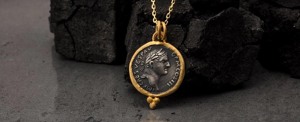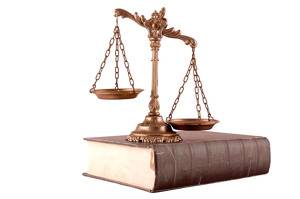Tavex uses cookies to ensure website functionality and improve your user experience. Collecting data from cookies helps us provide the best experience for you, keeps your account secure and allows us to personalise advert content. You can find out more in our cookie policy.
Please select what cookies you allow us to use
Cookies are small files of letters and digits downloaded and saved on your computer or another device (for instance, a mobile phone, a tablet) and saved in your browser while you visit a website. They can be used to track the pages you visit on the website, save the information you enter or remember your preferences such as language settings as long as you’re browsing the website.
| Cookie name | Cookie description | Cookie duration |
|---|---|---|
| tavex_cookie_consent | Stores cookie consent options selected | 60 weeks |
| tavex_customer | Tavex customer ID | 30 days |
| wp-wpml_current_language | Stores selected language | 1 day |
| AWSALB | AWS ALB sticky session cookie | 6 days |
| AWSALBCORS | AWS ALB sticky session cookie | 6 days |
| NO_CACHE | Used to disable page caching | 1 day |
| PHPSESSID | Identifier for PHP session | Session |
| latest_news | Helps to keep notifications relevant by storing the latest news shown | 29 days |
| latest_news_flash | Helps to keep notifications relevant by storing the latest news shown | 29 days |
| tavex_recently_viewed_products | List of recently viewed products | 1 day |
| tavex_compare_amount | Number of items in product comparison view | 1 day |
| Cookie name | Cookie description | Cookie duration |
|---|---|---|
| chart-widget-tab-*-*-* | Remembers last chart options (i.e currency, time period, etc) | 29 days |
| archive_layout | Stores selected product layout on category pages | 1 day |
| Cookie name | Cookie description | Cookie duration |
|---|---|---|
| cartstack.com-* | Used for tracking abandoned shopping carts | 1 year |
| _omappvp | Used by OptinMonster for determining new vs. returning visitors. Expires in 11 years | 11 years |
| _omappvs | Used by OptinMonster for determining when a new visitor becomes a returning visitor | Session |
| om* | Used by OptinMonster to track interactions with campaigns | Persistent |
| Cookie name | Cookie description | Cookie duration |
|---|---|---|
| _ga | Used to distinguish users | 2 years |
| _gid | Used to distinguish users | 24 hours |
| _ga_* | Used to persist session state | 2 years |
| _gac_* | Contains campaign related information | 90 days |
| _gat_gtag_* | Used to throttle request rate | 1 minute |
| _fbc | Facebook advertisement cookie | 2 years |
| _fbp | Facebook cookie for distinguishing unique users | 2 years |
A History and Explanation into Precious Metals Measurements

Precious metals like gold, silver, and platinum have played a central role in human history. Understanding how these metals are measured ensures fair trade and consistent valuation in global markets.
This article will look at the historical background of precious metals measurements, modern measurements, common measurements, how different industries use these measurements, and measuring tools.
Historical Background of Precious Metals Measurements

Early Civilisation Standards
Early societies, including Mesopotamians and Egyptians, measured metals using rudimentary scales and weighted stones. These early systems laid the foundation for later trade regulations.
Ancient Egyptian Measurement Systems
Egyptians used the “deben,” an ancient weight unit, to standardise transactions involving gold and silver. This enabled consistent valuations in their vast trade networks.
Greek and Roman Contributions
The Greeks introduced the drachma, while the Romans established the aureus coin standard, creating a basis for monetary systems still echoed today.
Medieval Trade and Precious Metal Standards
During medieval times, trade guilds and monarchies created official mints to regulate coin weights and purity, standardising metal values.
Modern Precious Metal Measurement Standards

Establishing the Troy Ounce
The troy ounce, originating from the medieval town of Troyes in France, remains the primary unit for weighing precious metals globally.
The Metric System and Global Adoption
Countries using the metric system standardise metal measurements using grams and kilograms, simplifying international transactions.
Common Measurement Units for Precious Metals

Weight Measurements
Troy Ounce (oz t)
- Equal to 31.1035 grams.
- Used predominantly in bullion trading.
Gram (g)
- Widely used in the jewellery industry and smaller bullion trades.
Kilogram (kg)
- Common for large-scale bullion and industrial transactions.
Purity Standards

Karat System (Gold)
- Measures gold purity on a scale from 1 to 24 karats.
- 24 – karat gold is pure, while 18 – karat gold contains 75% gold.
Millesimal Fineness
- Indicates purity in parts per thousand.
- Common fineness levels include 999 (99.9% pure) and 916 (91.6% pure).
How Precious Metals are Measured in Different Industries

Jewellery Industry Standards
Jewellery makers use precise scales and karat testers to ensure authenticity and quality in finished products. Gold jewellery is a popular gift or investment for many, with the highest karat possible being 18k gold. It can not be 24k gold as the gold may be too soft, therefore gold jewellery uses gold alloys.
Bullion and Investment Markets
Investment-grade metals require certification from recognised assay offices, ensuring weight and purity guarantees. The gold content in bullion markets tends to be 24k gold.
Industrial and Technological Applications
Precious metals like platinum and palladium are measured in grams for use in catalytic converters and high-tech electronics.
Key Precious Metal Measuring Tools

Balances and Scales
- Precision scales are essential for accurate measurements.
X-ray Fluorescence (XRF) Analysers
- Provide non-destructive testing for metal purity.
Fire Assay Techniques
- The gold standard for testing purity, though time-consuming.
Legal and Regulatory Aspects of Measuring Precious Metals
International Standards Organisations
- Entities like ISO set global measurement standards.
Government Assay Offices
- National agencies ensure compliance with purity and weight laws.
Challenges in Measuring Precious Metals
Counterfeiting and Detection Methods
- Counterfeit detection has become essential with advanced forgeries in circulation.
Assay Accuracy Discrepancies
- Variations in testing methods can lead to disputes in metal valuation.
Future Trends in Precious Metal Measurement
Blockchain for Provenance Tracking
- Blockchain ensures transparency and traceability in precious metal transactions.
Technological Advancements in Purity Testing
- Innovations in XRF and laser spectroscopy promise even greater accuracy.
Conclusion
The history of measuring precious metals reveals a journey of innovation shaped by trade, technology, and regulation.
From ancient scales to modern blockchain tracking, the methods for assessing the value and purity of gold bullion and precious metals have continuously evolved.
As global commerce grows increasingly interconnected, precise measurement standards remain crucial for maintaining trust, ensuring fairness, and supporting transparent transactions in the precious metals industry.


















